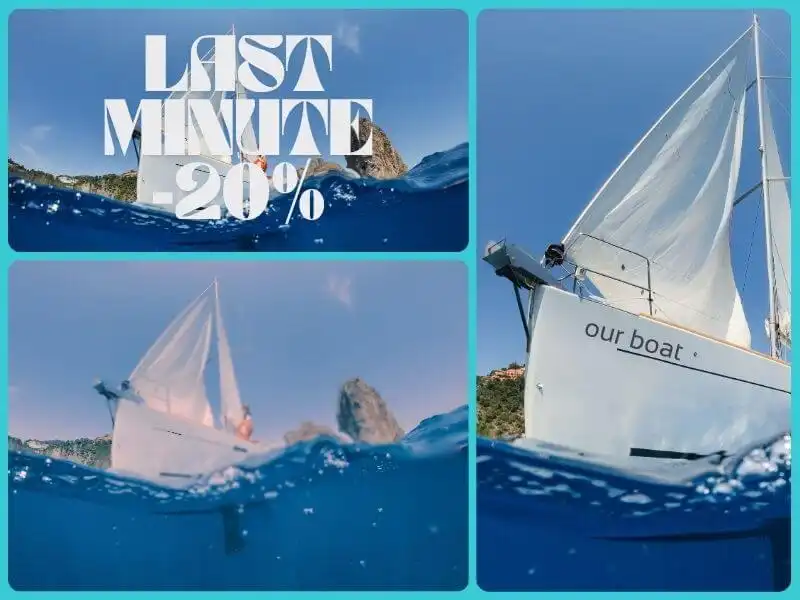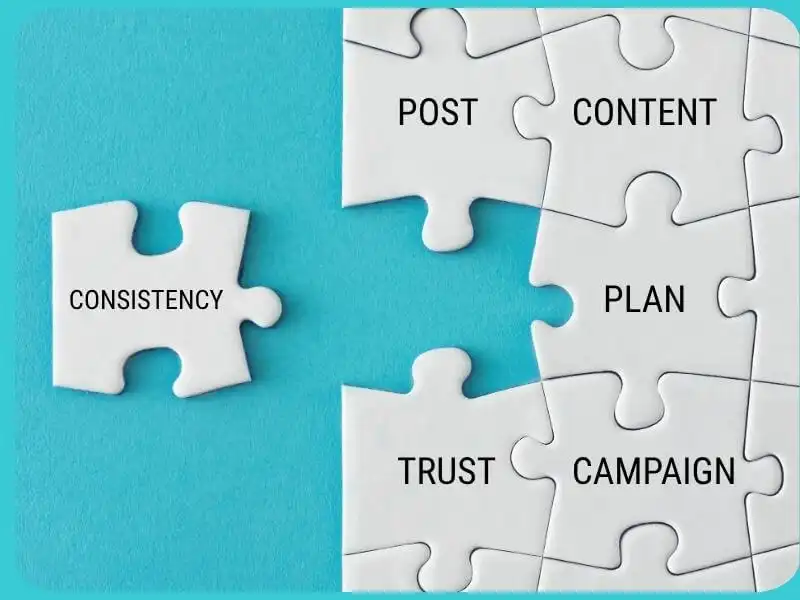
- 02.06.2025.
- News, Social media
If you're like most yacht charter companies, social media is somewhere at the bottom of your list. You post when you have time, when something happens. Or you simply never get around to it. Then the season starts and you think: “We should really post something…” This guide is here to show you how to create a simple posting plan with minimal effort that actually makes sense.
Yacht charter company owners and managers already have enough on their plates with operations and the season, so social media posts often come down to “when I get a chance” or “when I remember.” If at all.
And that’s exactly why yacht charter companies that post regularly and put some thought into it have the upper hand. You don’t have to post every day, but you should have a clear plan or calendar showing what goes on social media, when, and why you’re even doing it.

What to post – content that makes sense for you and your guests
Not all posts are the same.
One type of content grabs attention, another builds trust, a third encourages inquiries, etc. If you're constantly posting only photos of boats and discount percentages, you are not showing what your company truly offers. And what your audience actually cares about.
Here are a few ideas of what you can post:
- Boats, but in context – instead of posting 10 nearly identical yachts at the dock, show what a day on one of those yachts looks like. Focus on the atmosphere, people, surroundings, details…
- Guests and their experiences – with their permission, post a photo or video of a guest. People like to see real people and their genuine impressions.
- Destinations – make your social media useful. Show bays, routes, restaurants, local attractions, in other words, share things that would be useful to your potential guests.
- People and daily life – who are you? Who works at your yacht charter company? What does boat prep for check-out look like? People love to see the human side.
- Tips and info – what to pack for sailing? How to dock in a marina? How to tie to a buoy? What does “check-in” mean? These kinds of posts show that you care about your guests and help them out.
When to post – it's not about quantity, but consistency
Most yacht charter companies post when something interesting happens or when they find the time.
But that’s not ideal – your audience responds better when you're predictable and consistent.
If you don’t have much time, it’s better to post twice a week, every week, than 10 times in 3 days and then nothing for a month.
Here’s an example of a good social media calendar:
- 2 to 4 posts per week – perfectly sufficient for most smaller companies
- Best days – Tuesday, Wednesday, and Thursday in the evening or early morning
- Stories – you can use them more frequently, for short videos, various updates, behind the scenes and similar
If you use tools like Meta Business Suite or Canva, you can schedule posts in advance and make things much easier for yourself.

How to actually plan content ahead of time
You don’t need to be as prompt as a marketing agency, but you do need a posting plan.
It’s enough to plan 4 to 8 posts once a week or once a month, covering different topics – for example, one boat, one guest experience, one useful tip and one destination.
Here’s how you can organize it:
- Create a table in Excel or Google Sheets. Enter the date, post type, topic and status (e.g. prepared/to be published).
- Use Canva to prepare visuals. You can also schedule posts there if you have the paid (Pro) version.
- In Meta Business Suite, you can schedule posts for Instagram and Facebook for free.
If you set aside just 2 hours a week for planning and preparation, it’s less time than you’ll spend scrambling to figure out what to post “last minute.”
That way, your posts will have a schedule and a purpose, and you won’t be posting randomly. And best of all, your profile will look like someone is taking care of it and doing it professionally.
Responding to messages and comments (don’t skip this part)
It’s important to post, but communication after the post matters too.
Everyone who asks a question or leaves a comment is likely interested in you and probably considering your offer.
Respond quickly and clearly:
- Quick replies show professionalism – you don’t need to write long messages, but people need to see that you’re there.
- The audience appreciates a personal approach – automated responses, identical replies to everyone or ignoring messages lowers trust.
- Your reply can make the difference – if a guest is choosing between you and another charter, your response might tip the scales.
- Comments are public – when you reply, you’re not just speaking to one person, but to everyone reading it.
Even if you can’t respond right away, reply as soon as you can. It’s more important to be present and engage genuinely than to post another photo of a boat while ignoring your audience.

Mistakes that ruin the impression and how to avoid them
Social media is not a catalogue of your boats. If your posts seem rushed or look (or truly are) like an ad or a copy of your website offer, the audience notices – and scrolls past.
Here are the most common mistakes yacht charter companies make:
- Poor photo quality – blurry, too dark or low-resolution images simply don’t work.
- Posts without captions – people don’t know what they’re looking at or why it should matter to them.
- Too much text on the image – if you use images with big text (like “LAST MINUTE -20%”), it looks aggressive and comes off as an ad.
- Generic posts – the same photos as your competition, same phrases, same calls to action.
- Only “salesy” content – people don’t go on Instagram to look at discounts, they go to see what they could experience.
Instead, focus on:
- Authentic moments
- Guest experiences
- Practical tips
- Local recommendations
- The human side of your crew
These are the kinds of posts people share, remember, and that bring them back to your profile.
Results build slowly, but they last
Social media isn’t just a place to show off your boat. It’s where guests first come into contact with you.
It’s where they form an impression of you, compare you with others, and decide whether to send you an inquiry or not.
Here’s what happens when you have a good posting plan:
- Guests see you as a charter that knows what it’s doing
- You create a sense of presence and reliability
- People return to your profile, save your posts, share them with others
- Over time, you receive more inquiries because people notice and remember you
Posting regularly on social media also shows that you care about your own business. The variety of content you share helps people see you as real people, not just another charter company in a sea of competitors.

The point isn’t to be perfect, but to build trust
In the end, what really matters isn’t the number of likes, but the number of people who remember you and with whom you’ve made a connection.
Having a calendar is not just a tool that will make your marketing easier, but also part of your relationship with your guests.
1. Start with a small plan.
2. Choose your posting days.
3. Prepare your content one week in advance.
4. Show who you are and what you do.
And don’t forget:
5. trust is not built through one-off campaigns, but with consistency.
If you’d rather be doing anything else than posting on social media – reach out to someone who does it professionally.
But whatever you do, don’t leave your social media to chance.
Don’t know where to start? Need help with content or want someone else to handle your posting plan? Get in touch or subscribe to our newsletter – every week you’ll get practical tips and ideas tailored to yacht charter companies.
Categories of trends
- News
- Sale
- Marketing
- SEO
- Web design
- Social media
- Technology
- Regulations
- Management
- Education
- Finances
- User experience
Newsletter
Sign up for the newsletter and receive the latest trends and tips straight to your inbox





